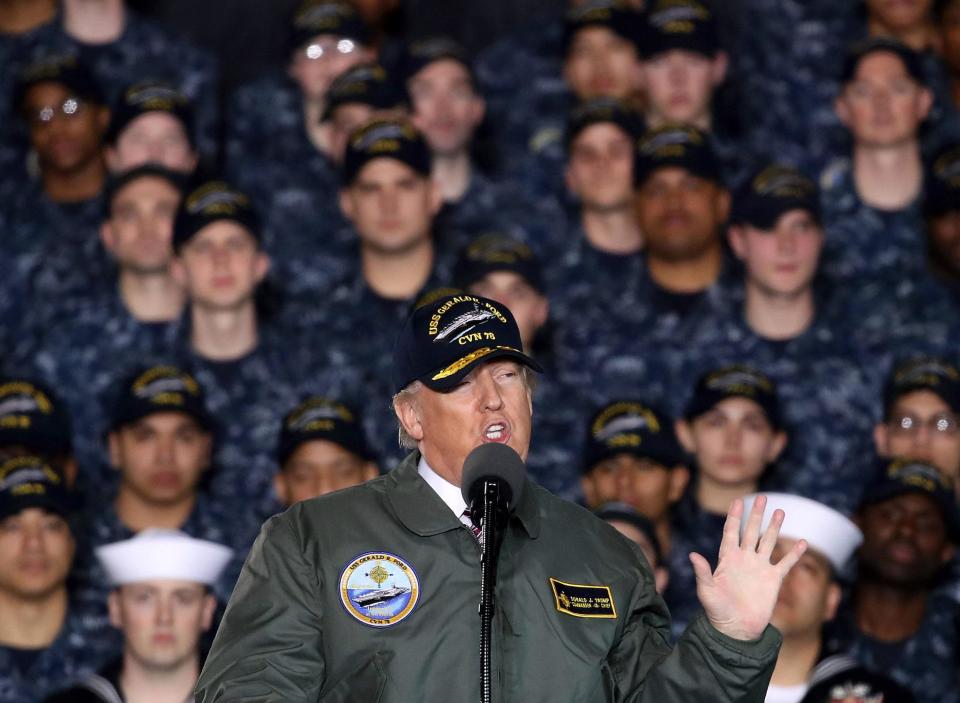What Donald Trump’s ban on transgender people serving in US military actually means

Donald Trump's tweets about banning transgender people from the army could be far more extreme even than they appear.
The President said that the US will not "accept or allow transgender individuals to serve in any capacity in the US Military", in a tweet. He said that allowing them to serve would lead to "tremendous medical costs and disruption".
The posts certainly confirm that the President will seek to uphold the ban on transgender people joining the US military, a ban that is currently in place. That was supposed to have been lifted by the beginning of this month – a deadline that defence secretary James Mattis pushed back – but now the lifting of that ban appears to have been permanently blocked by Mr Trump.
For more news videos visit Yahoo View, available on iOS and Android.
More dramatically, the tweets also suggest that transgender people who are currently serving in the army – or those that come out or transition during their service – will also be kicked out. That would be a major break with policy, and roll back huge gains made by trans people in recent years.
Transgender people have been able to serve in the US military since last year, after a decision by former defence secretary Ash Carter. And since late last year they have been able to receive medical care and begin the process of formally transitioning, including changing their gender identity within the Pentagon's official systems.
Already, there are as many as 250 service members in the process of transitioning to their preferred genders or who have been approved to formally change gender within the Pentagon's personnel system, according to several defense officials.
When the ban on trans people serving was lifted, Mr Carter gave the military until the beginning of this month to develop policies that would allow people who already identify as transgender to newly join the military, if they meet physical, medical and other standards, and have been stable in their identified genders for 18 months. Military chiefs recently announced a delay on allowing transgender people from enlisting, pushing back that decision until December.
But Mr Trump appears to have announced the result of that decision as well as potentially making far more sweeping commitments.
Mr Trump's tweets – which were broad and said transgender people would be banned from serving in "any capacity" – suggested that he would seek to kick out people who are currently serving in any branch of the US military, and in any job. That would be a major break and could lead to thousands of transgender people being removed from their service.
There are between 2,500 and 7,000 transgender service members currently serving in the military, according to a Rand Corp survey, and a further 1,500 to 4,000 in the reserves.
Chad Griffin, president of the Human Rights Campaign, said that by attacking those thousands of serving members of the military who are transgender Donald Trump is "undermining our military".

